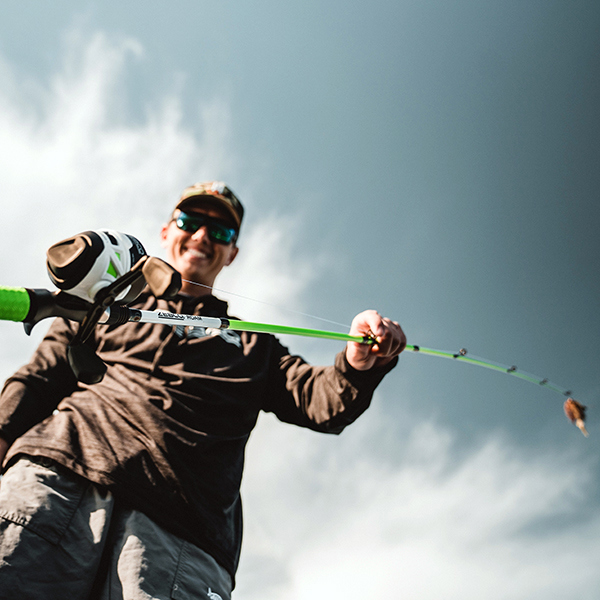It’s probably happened to most anglers while fishing in mid to late autumn. Walleyes, crappies, perch and smallmouth are in deeper water than usual. Every now and then we see on the sonar what we think is a fish. Then it bites. It is a fish! It’s then that we realize: Fishing in mid to late fall and early winter can be a bit like ice fishing. Here’s how you can take advantage of that realization.
Open water fishing in mid fall to early winter is different than open water fishing in the warmer months. In the warmer periods, fish spread out more in a body of water. A casting or trolling presentation enables us to cover a lot of water quickly and often works well, but your lure goes by the fish quickly. They don’t have much of a chance to look at it: They either eat it or it’s gone.
Starting in mid-fall, several popular species of fish will school tightly in deeper water. If you’re trolling, your bait will be in their strike zone for a short period of time. But if you can find those schools, it’s productive to hover over them. In the deeper water, more than twenty feet deep, you can catch several fish from a school before they spook. Then you go looking for another school. Very similar to ice fishing.
Another similarity. When ice-fishing, a slow bait presentation is often the most productive. Not always, but often. Same thing in the cold water of autumn. In years past, anglers relied on a jig/minnow combination to get these fish to bite. In recent years many anglers have learned that a jig/plastic presentation has advantages. Shape, color, and action options are all features that can be found in plastic, but not in minnows. Subtle rod tip movements will make a plastic bait like a Rage Swimmer or Mr. Crappie Grub wiggle almost like live bait.
Sonar is an important fishing aid, and is even more-so in deeper water. It helps eliminate the areas where there are no fish. Ice anglers learned many years ago that sonar would help them catch more fish. Vexilar is the pioneer in ice sonar and continues to introduce new features that help anglers put more fish on the ice. There are several companies that produce equally outstanding open water sonar. If you see fish on your sonar, drop them a line. If you don’t see what you believe is a fish, keep looking. They’re easy to recognize once you’ve seen a few. When presenting a bait to them, keep the bait a few inches to a foot above them. They’re more likely to see and eat a bait above them than below them.
If they don’t bite, change the lure’s action, size, or color. If that doesn’t work, try a completely different type of lure. If you’re using a jig that they won’t eat, drop them a spoon. If that doesn’t do the job, find another school of fish, but remember where the ones were that wouldn’t bite. Eventually they will.
And now something really important. These fish in deep water are fragile. If they come to the surface too fast, the pressure change will make them sick. They often won’t survive being released. If you want fish for supper, keep a few, then go looking for shallower fish. If you do that, we’ll be able to get in on this action every year at this time.
